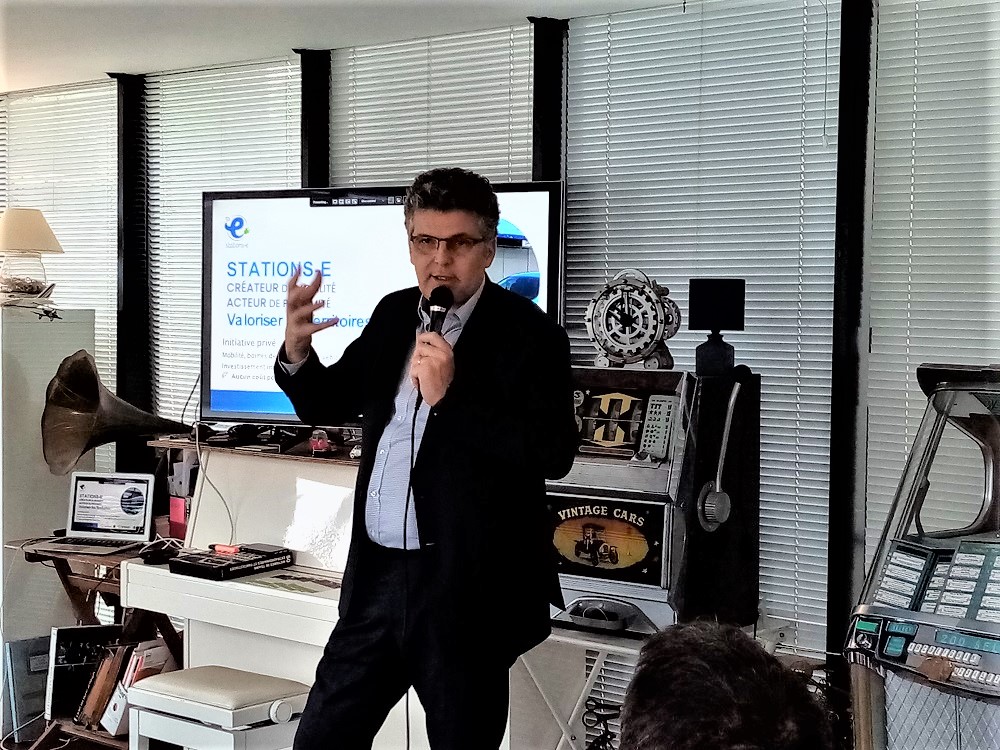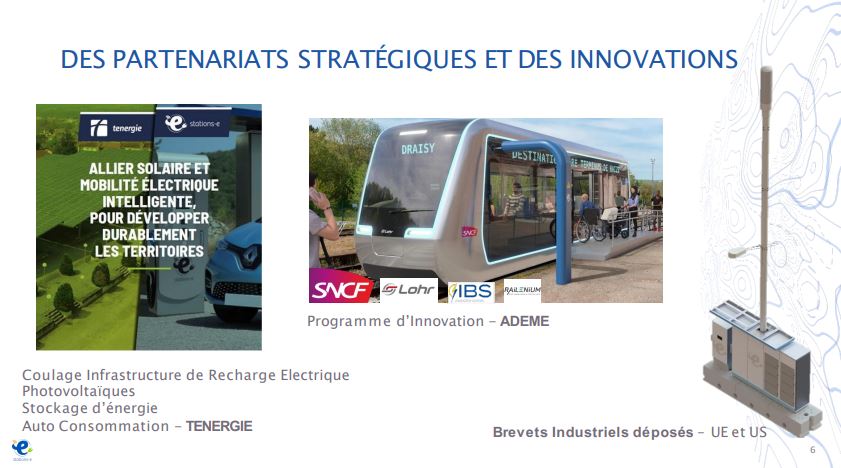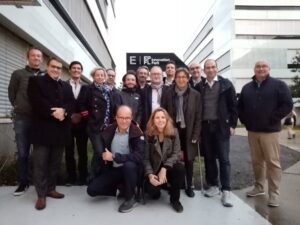Alain Rolland, Stations-e: multi-service, connected charging stations – April 2023
Alain Rolland, Stations-e: multi-service, connected charging stations – April 2023
On 18 April 2023, during a session dedicated to the impact of vehicle electrification, Alain Rolland, founder and CEO of Stations-e, presented his business and vision of electric mobility.

FM : What is the specific positioning of Stations-e among the – many! – electric charging station operators?
Alain Rolland: When setting up this new company in 2018 focusing on mobility and electric cars, I first noted that selling electric recharging alone would not be profitable – on account of both fluctuating energy purchase prices and significant competition in this market segment, which pulls down selling prices.
So I decided to focus the activity on innovation and people’s aspirations.
People want to travel around seamlessly and at lower cost, and communicate easily too. There is also a desire for proximity, with services close at hand throughout the country, including in rural areas.
The fourth aspiration is data, both for individuals (how much they have got or must use, etc) and professionals. Renault, for instance, doesn’t know what happens between the car and the charger, since the company doesn’t manufacture chargers. This data is important for manufacturers to know how to improve their vehicles. The data is also important for local authorities on the use of charging stations, traffic, other services offered by the charging station, and so forth.
Given these aspirations, a Stations-e is designed as a connected multi-service station. It has been engineered to operate electric charging and allow partners to join forces to offer a range of additional services, like pick-up points (parcels, fruit and vegetables…) or car sharing.
Here we find the sales model for phones, with kilometres of electric charge instead of gigabytes! The operator (us!) will have subscribers and offer them other services just as music and insurance, etc, are in telecommunications. This is what makes Stations-e profitable.
FM: Can you charge your vehicle anywhere in France with Stations-e?
AR: Our charging stations offer interoperability with other charging providers. This works on exactly the same model as in telecommunications. La Banque Postale [French Post Office], for instance, which has no network of its own, nevertheless sells mobile phone services using the mobile phone operators’ network. The idea is to allow our customers to charge at as many charging stations as possible.
Our own stations are installed on the outskirts of towns and cities, even in extremely rural areas. We are not targeting dense city centres because the challenge is to reduce car use in urban centres to decrease local pollution and congestion, not facilitate the arrival of individual electric cars!
FM: What partners are you working with to build this model?
AR: We had already signed with Orange, Free, Bouygues, and SFR, also with La Poste and Amazon, with Clem’ for car sharing and Renault for the Plug & Charge functionality.
Our teams approach innovation from three angles: ecological, social, economic. For each one, they look where to innovate. We work with start-ups too. For instance, we have met with Lify-Air, which makes pollen sensors and has developed a dedicated app. They’re interested in installing their sensors on our stations. Another example is Kyanos Biotechnologies in Toulouse, which installs urban furniture that contain algae to capture particles. We’re investing to help them develop their solution, with the idea of eventually bringing them on board our charging stations.
FM: Fast or slow, which kind of charging do you offer and why?
AR: Stations-e is keen to promote charging without thinking and a little slower. Using fast charging can harm the condition of a battery, since the heat generated by such high power can damage its components.
What’s more, it’s not necessarily the best solution for users, given their travel habits. We’ve identified 12 types of behaviour – weekly or day-to-day – when it comes to travelling by car: going to the theatre or a doctor’s appointment, sport, shopping, etc. So we want to set up around these places people visit on a regular basis so users can charge their vehicles.

FM: What role do you want to play in acclerating vehicle electrification?
AR: To help spread the use of electric cars, we need to address the two main economic barriers: the cost of the car itself and making charging easier and at an attractive rate, including for people living in flats, especially those in social housing. We’re going to tackle this second barrier with a charging offer of 17 centimes per kWh for people living in social housing estates, i.e. equivalent to 35 centimes a litre of petrol!
We approach local authorities, proposing they rent us public spaces to install our Stations-e. Since our model with the range of services is self-financing, introducing our stations doesn’t incur any costs for local authorities.

FM: What about the price of electric vehicles? How do you see the car market developing?
AR: Chinese electric cars are going to drive down consumer prices and ultimately lead to the electric car being seen as a telephone with wheels, as an object of mobility with many services offered in parallel. So the electric car will become something other than what the combustion engine car is today. Traditional manufacturers like Peugeot and Renault will have to adapt accordingly.
FM: Are you also working on charging or energy storage technologies?
AR: Yes. Stations-e is currently working in partnership with the Lohr industry group and SNCF [French Railways] on a project for charging light battery-powered trains, linked with energy storage.

FM: What are Stations-e’s ambitions?
AR: Today, Stations-e has a team of 30 employees, with a further 150 people working for us in France to develop the stations. To date, we have already installed 150 charging stations in France and are aiming for 300 by the end of 2023.
But our approach involves a much broader vision than just installing the infrastructure. We need to take into account many other elements, like purchasing energy, the behaviour of vehicle owners, industry partners…. All these components will enable us to build an ecosystem that can be exported to other countries in Europe: Spain, Italy, Germany…


